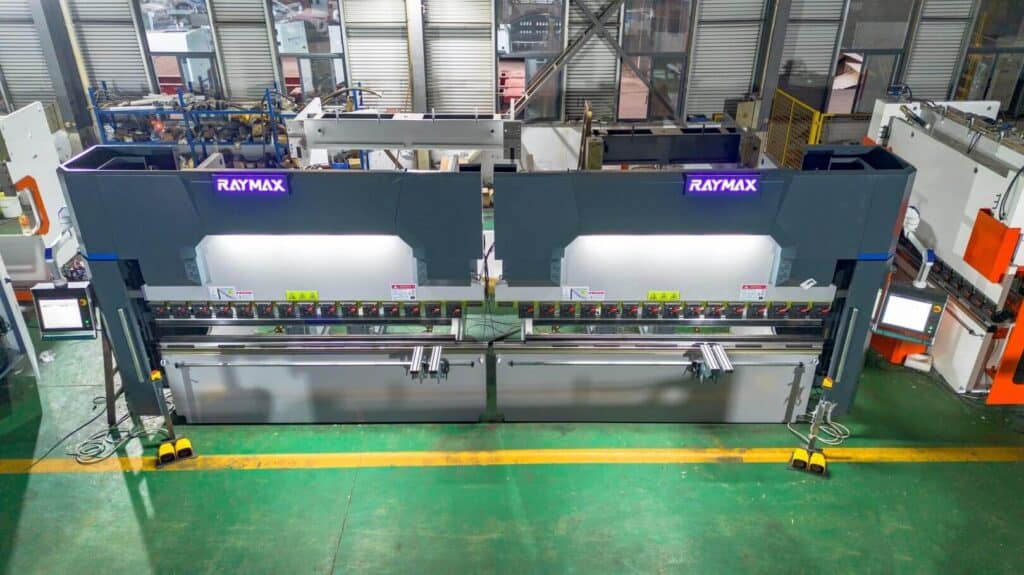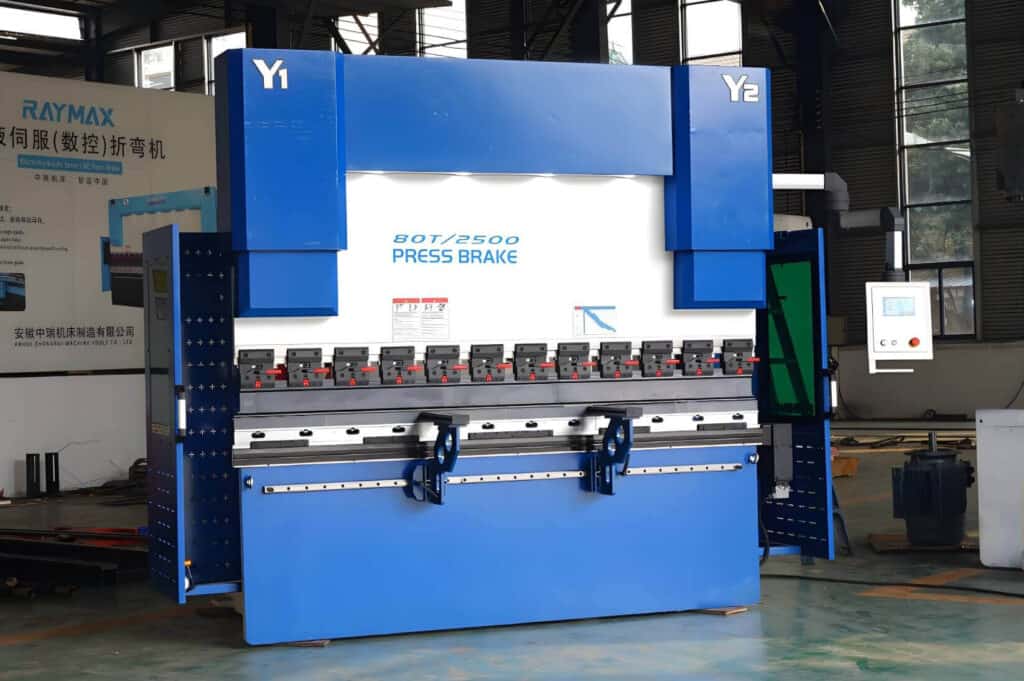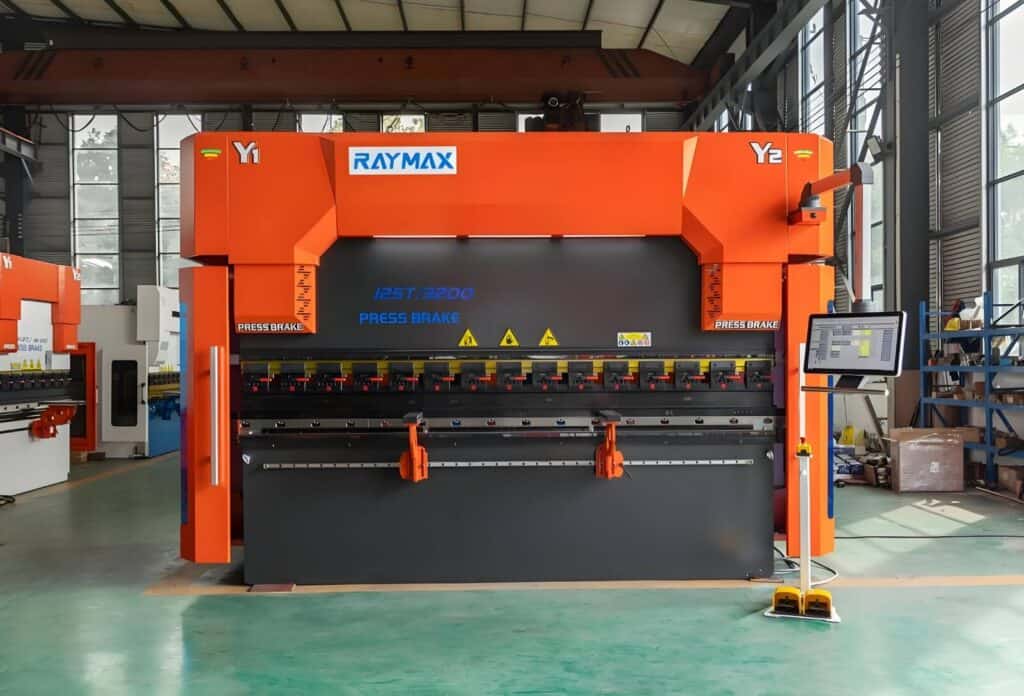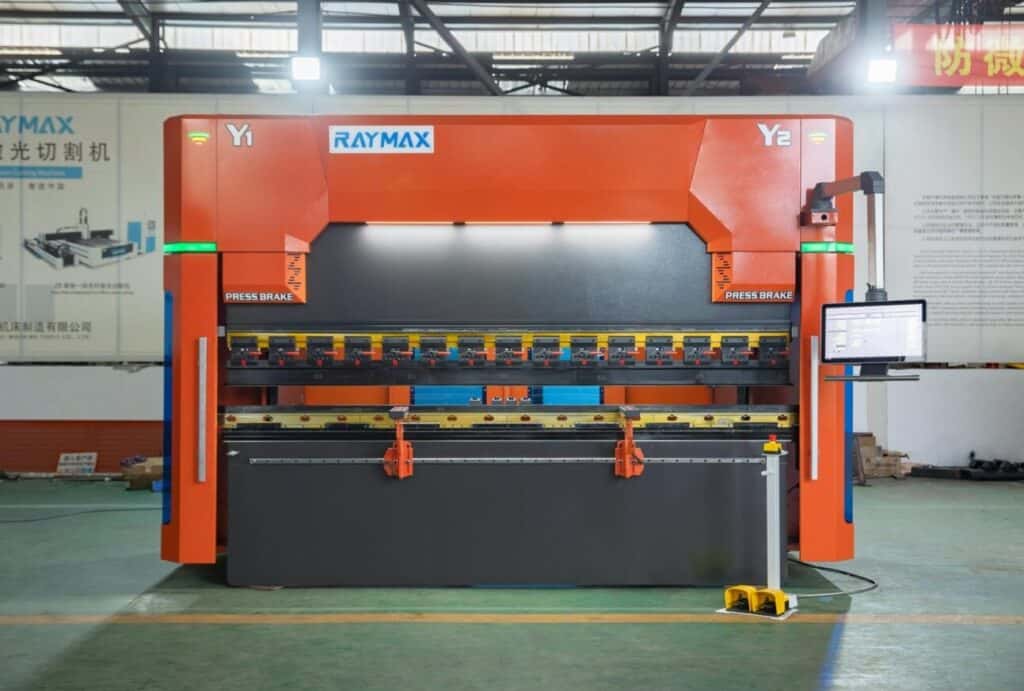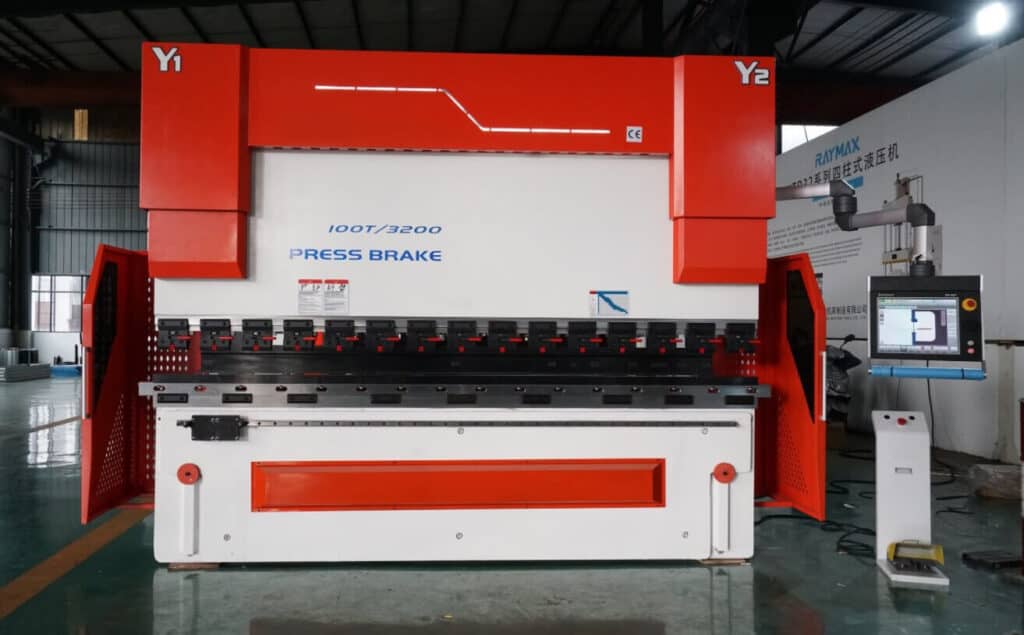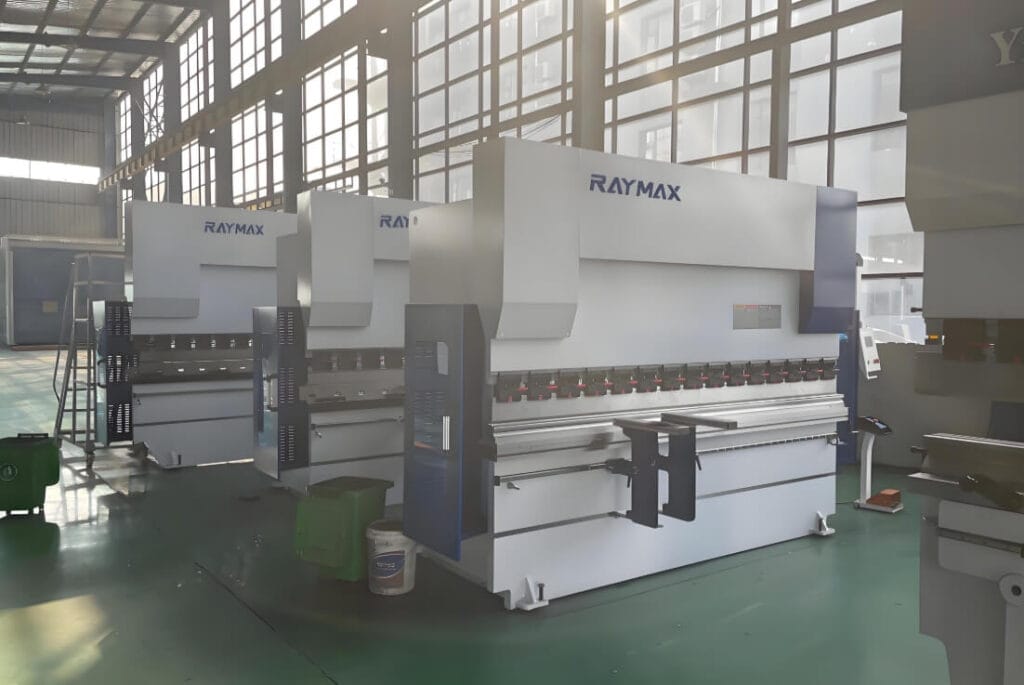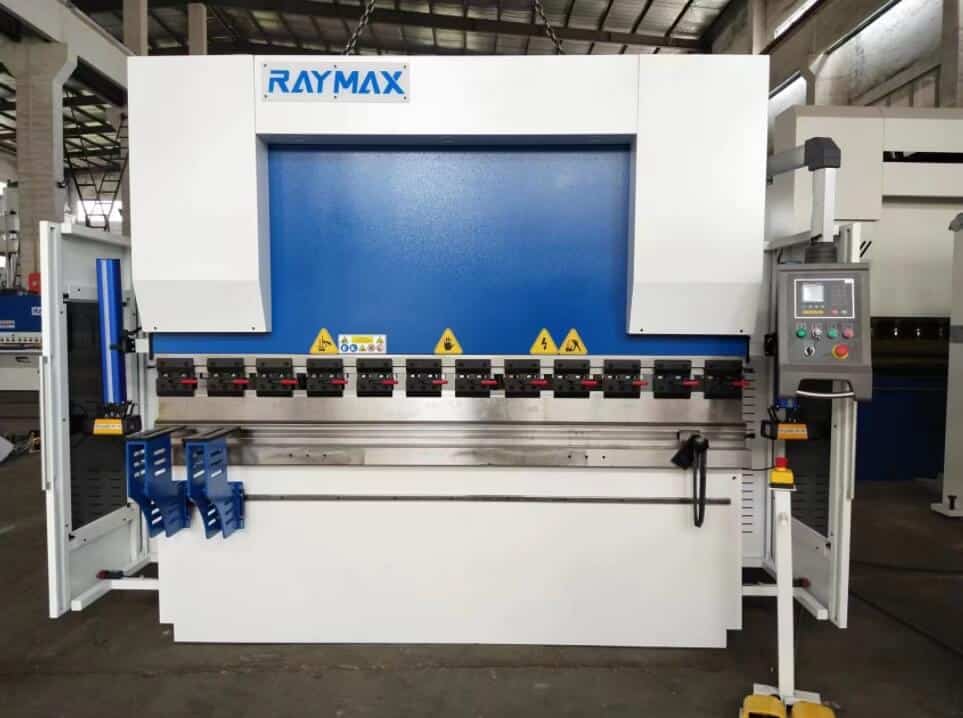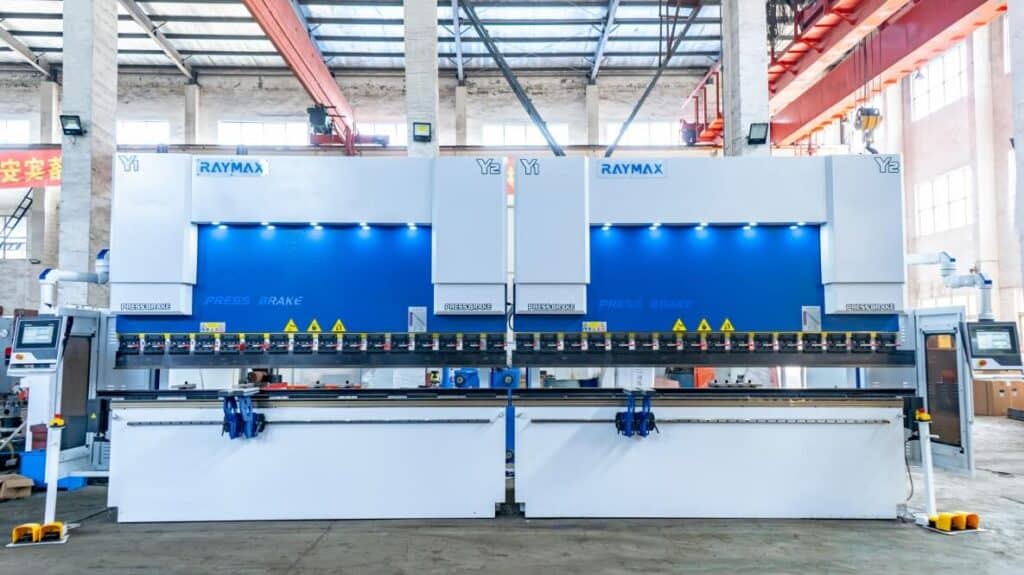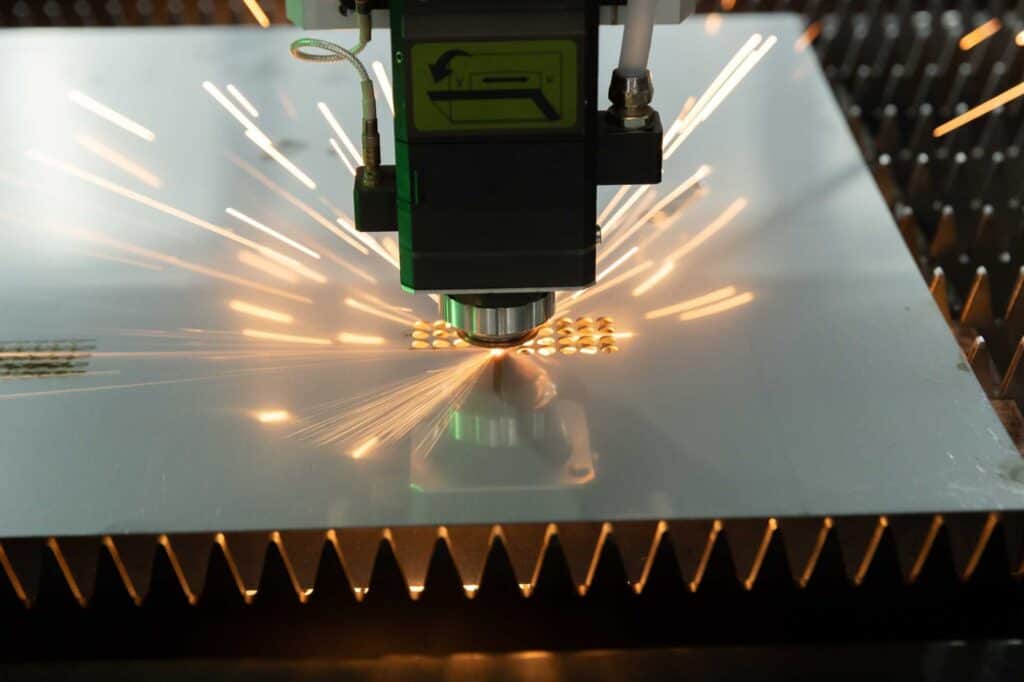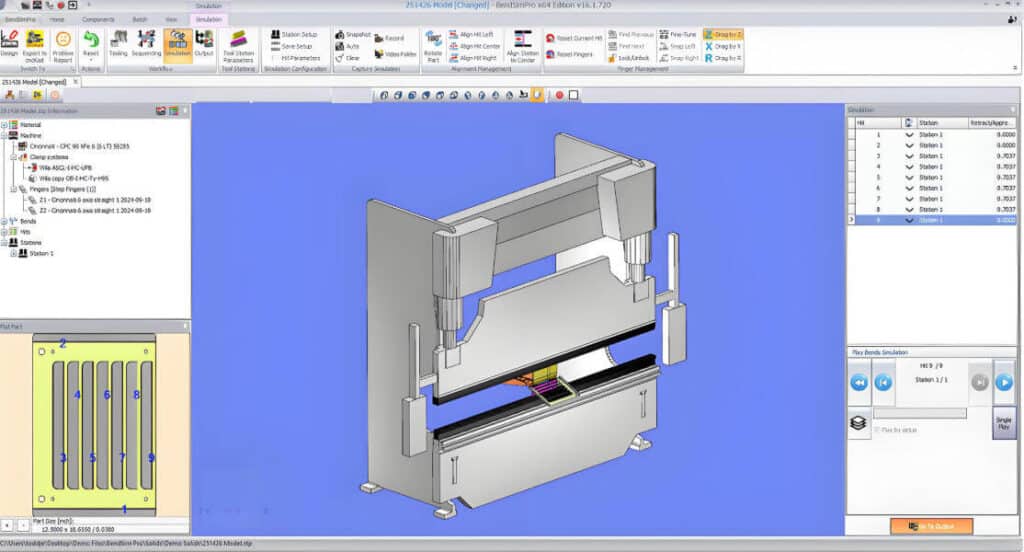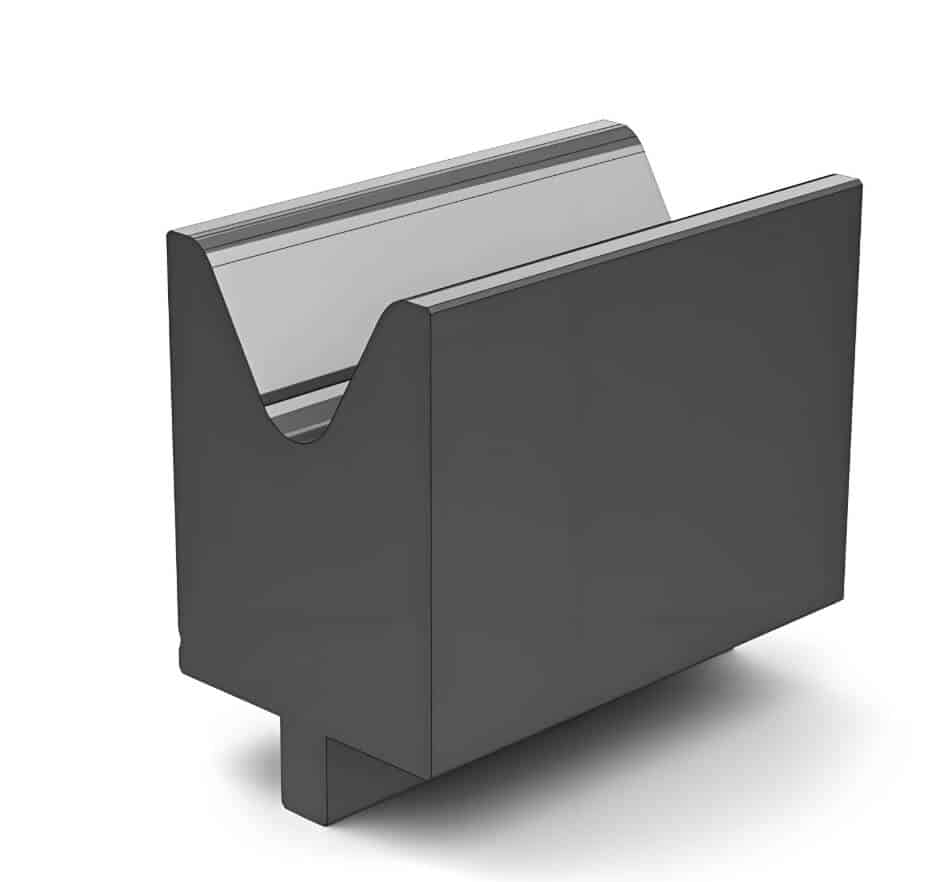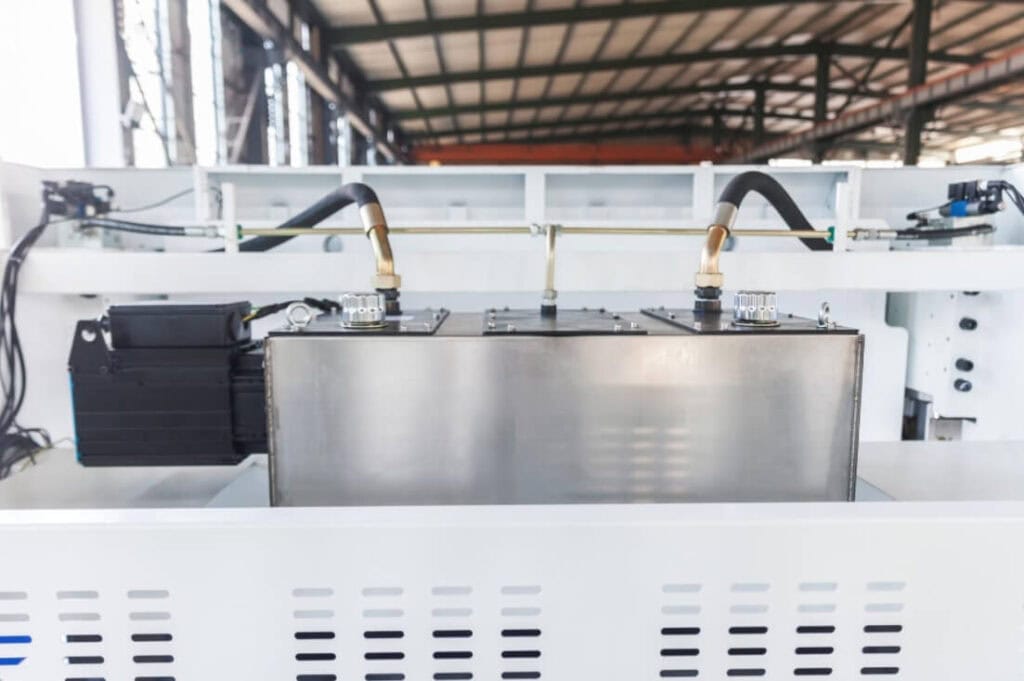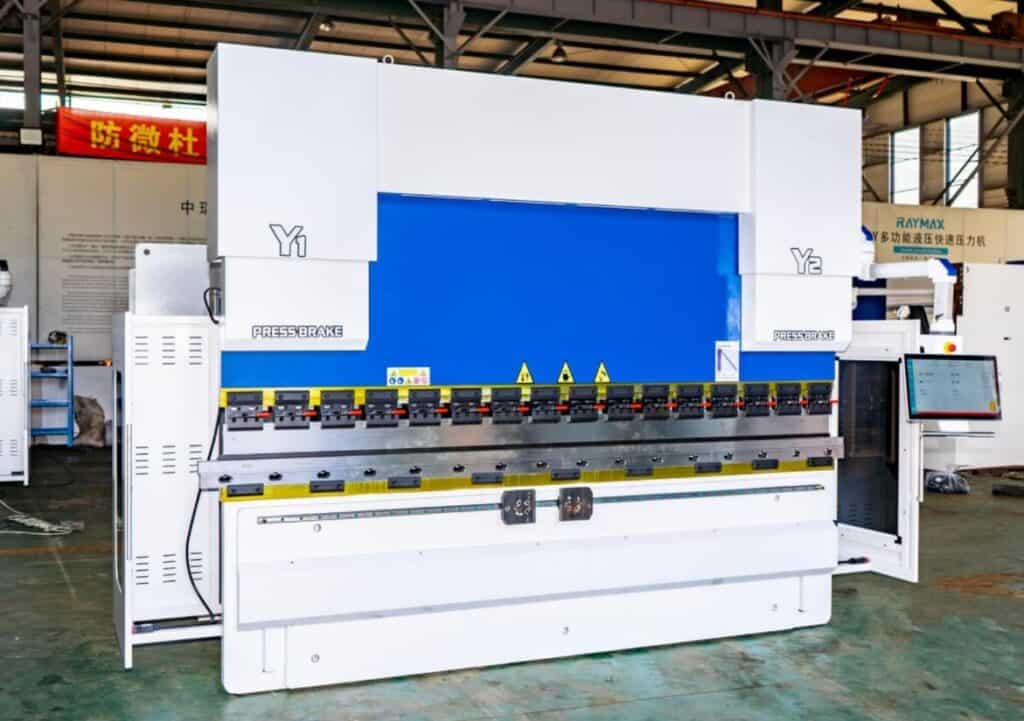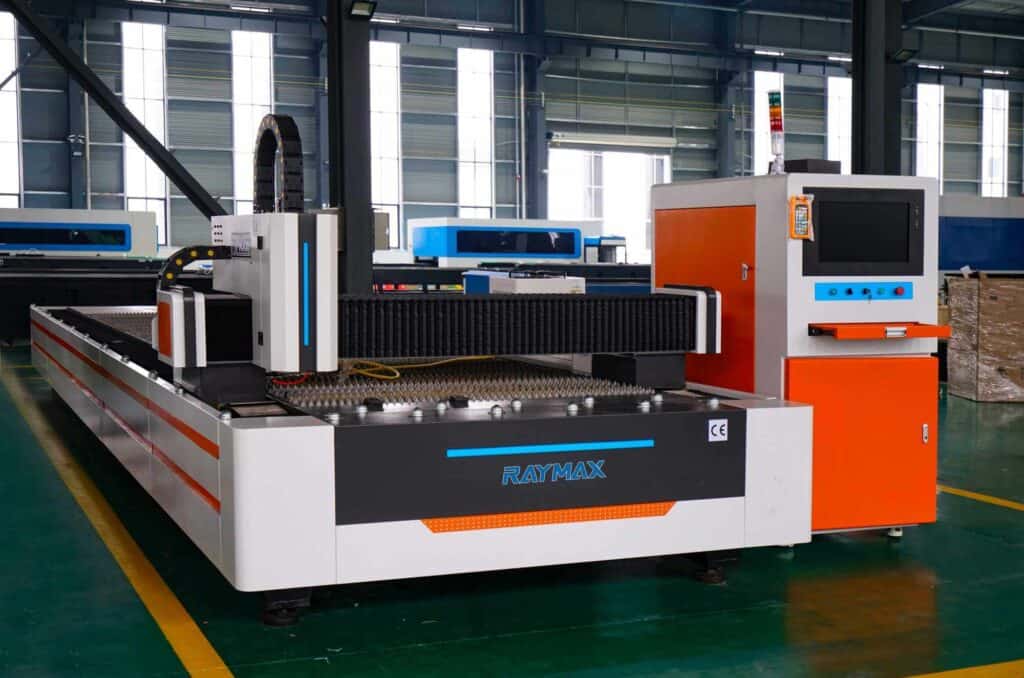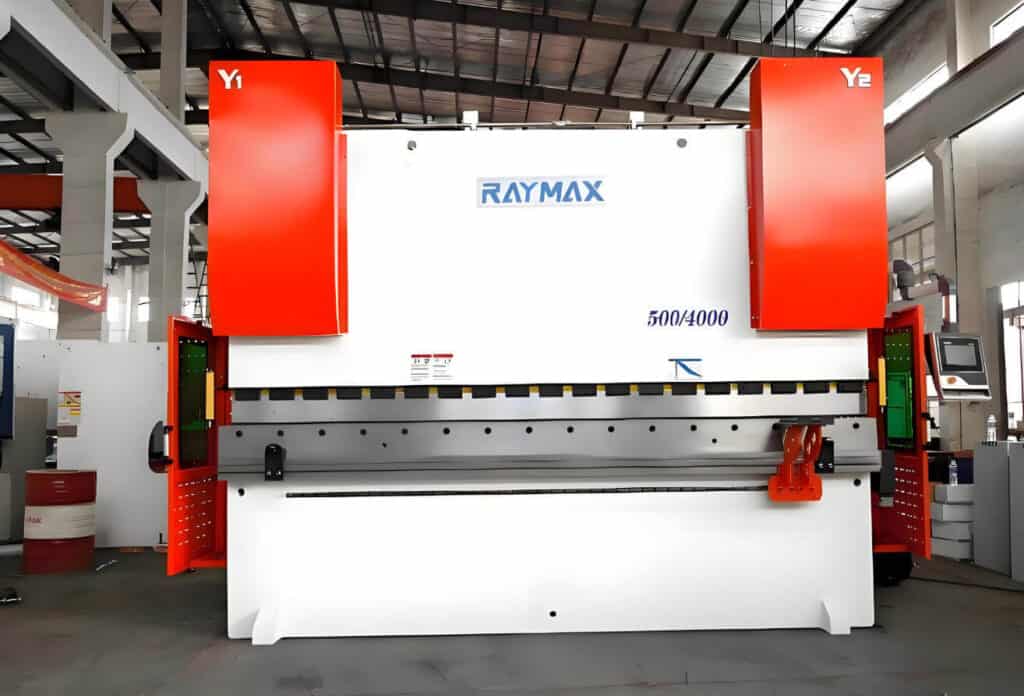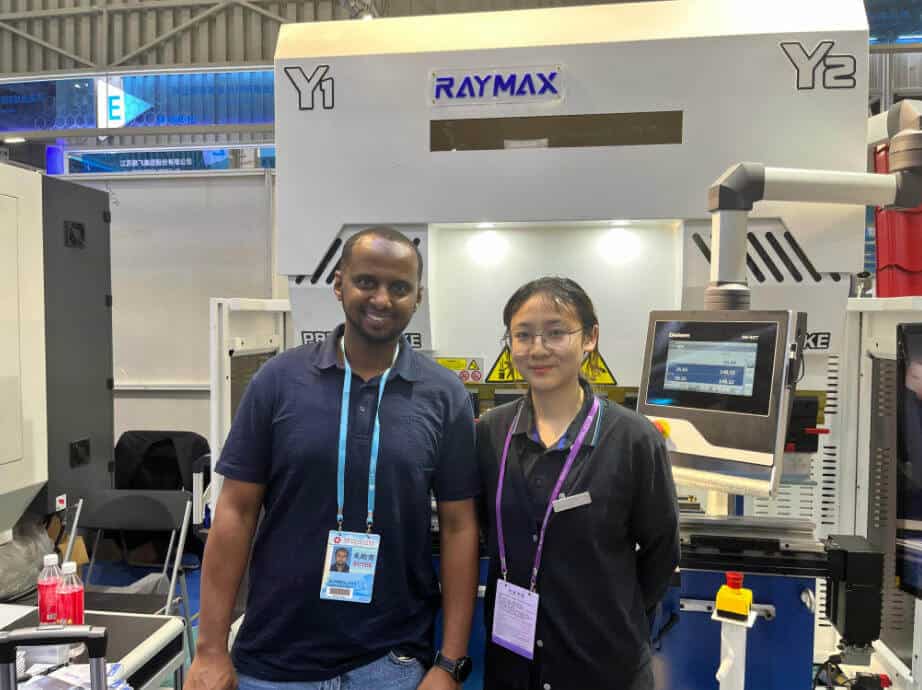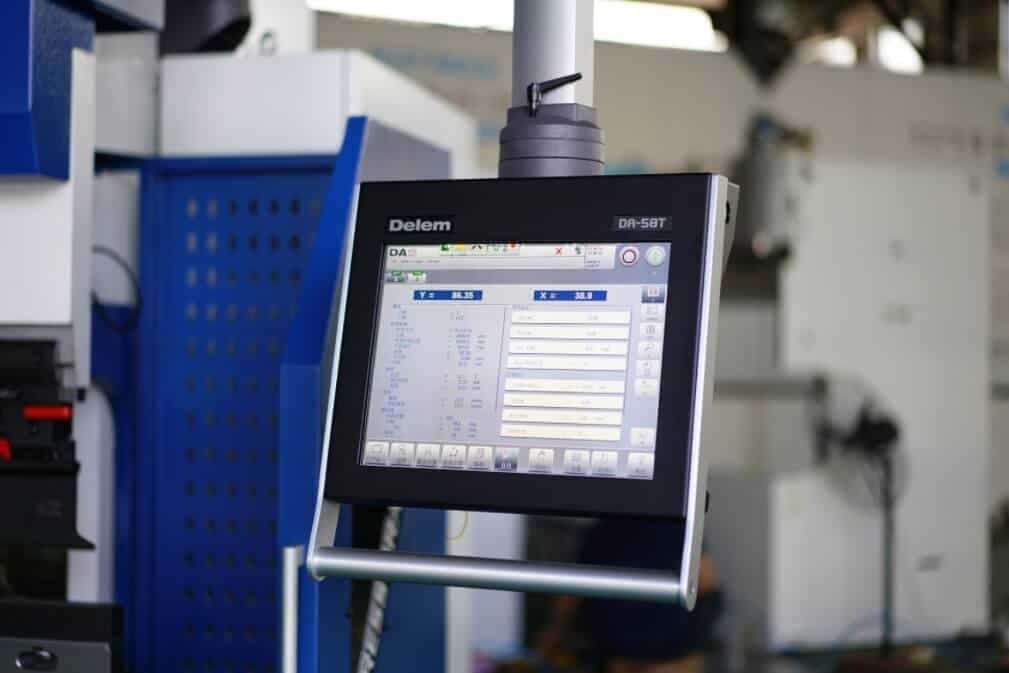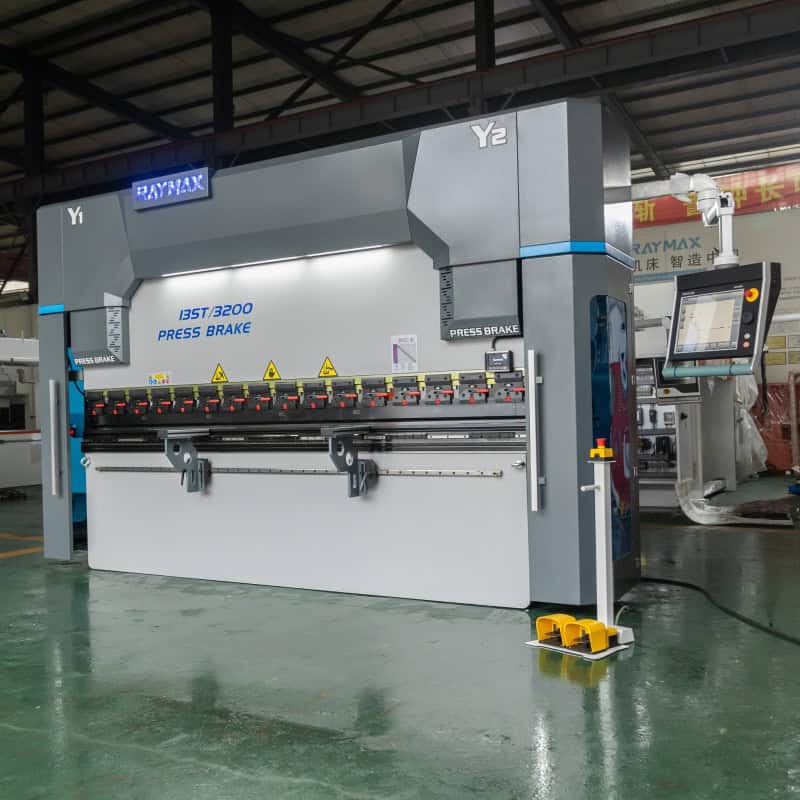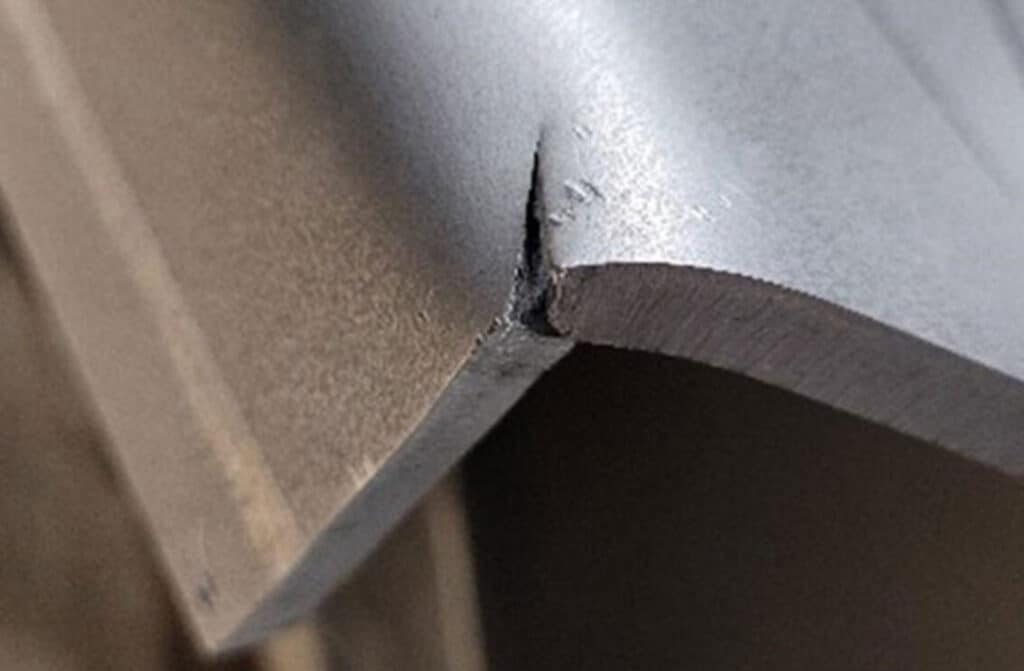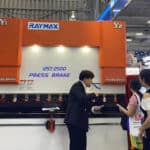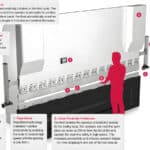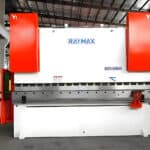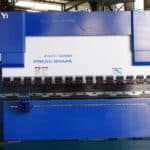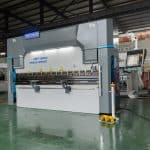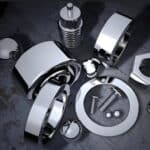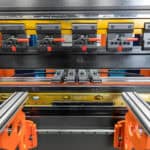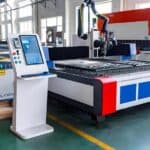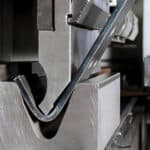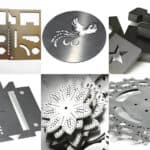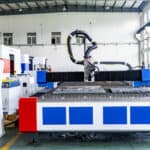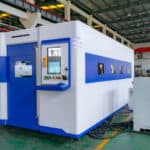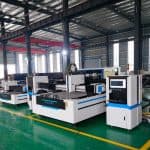1. What is press brake forming?
1.1 Definition of press brake forming
Press brake forming process refers to a metal manufacturing process that uses a sheet metal press brake to clamp metal raw materials between a punch and a die to bend them into various pre-set shapes.
1.2 The purpose of press brake forming in the manufacturing industry
The purpose of press brake forming is to enable metal sheets to create various features and shapes in the manufacturing industry, improve metal strength and stability, and thus improve production efficiency.
1.3 Industries that use press brake forming
Generally, the industries that use press brake forming include automobile manufacturing, electronics industry, aerospace industry, construction industry, and furniture manufacturing.
2. What is a sheet metal press brake ?
2.1 Definition of Sheet metal press brake
Sheet metal press brake machine is a machine used to make various types of metal sheets into different shapes;
2.2 Purpose of sheet metal press brake
Sheet metal press brake machine is a very useful multifunctional equipment in the manufacturing industry:
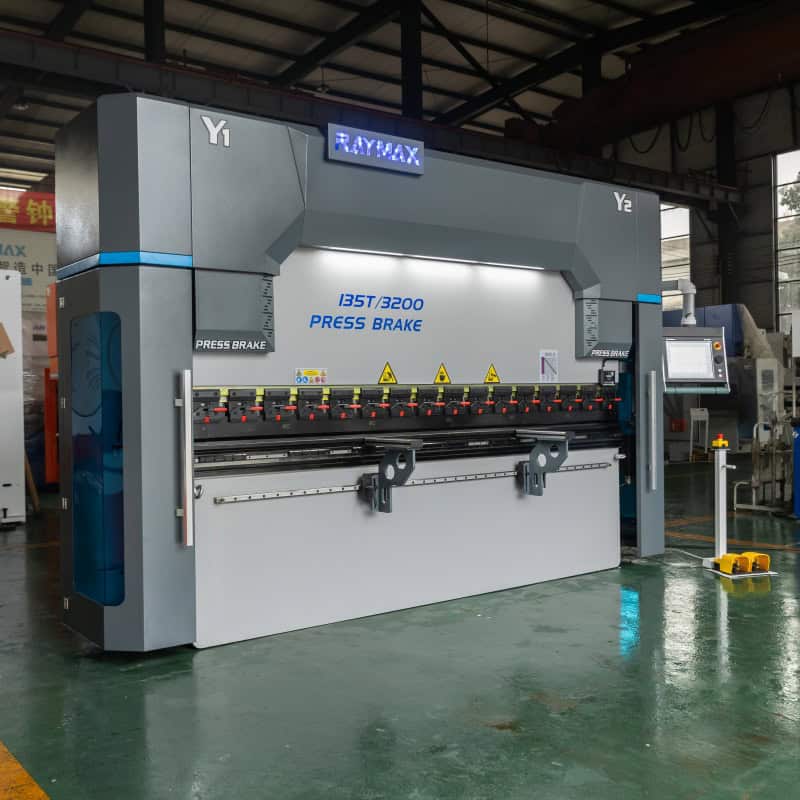
3. Working principle of sheet metal press brake
3.1 Working principle
Sheet metal press brake machine is operated by hydraulic control through mechanical advantage. Usually, the metal sheet is fixed on the workbench, and then the upper die is used to apply pressure. With the extrusion of the upper and lower dies, the metal sheet is bent into various shapes. Generally, the bending angle is controlled between 30-90 degrees.
3.2 Basic process flow of press brake forming
Press brake forming is a basic process in metal processing, which is usually divided into the following steps:
3.3 Main press brake forming technology
press brake forming is mainly divided into four types of bending technology: air bending, bottom bending, stamping bending and three-point bending. Each technology has its unique advantages and characteristics. Let us introduce the basic situation of the four technologies.
3.3.1 Air bending
Definition: Air bending uses the principle of lever, and the metal sheet will not be in full contact with the mold.
Advantages: The advantage of air bending is that it is highly adaptable. The same set of tools can be used for different bending work, and the required bending force is smaller and the bending speed is faster than other methods.
Disadvantages: The defect is that its bending accuracy is low and the bending angle is not very accurate.
3.3.2 Bottom Bending
Definition: Bottom bending is different from air bending in that it requires the metal sheet to be in full contact with the die.
Features: The characteristic of bottom bending is that when the metal sheet is released during operation, it will rebound naturally.
Advantages: The advantages of bottom bending are high precision and good bending repeatability, which is more suitable for mass production;
Disadvantages: The only drawback is that its bending angle is limited and can only be used for bending at 88 and 90 degrees.
3.3.3 Stamping Bending
Definition: Stamping bending is a high-pressure bending technology that was originally developed for coin casting.
Features: Stamping bending is characterized by the need for heavy brakes and tools because it requires 4-5 times the force of air bending.
Advantages: Due to the huge pressure applied, its advantage is that it can bend metal sheets with large thickness tolerances;
Disadvantages: The disadvantage is that the aesthetics needs to be improved, and the shape of the metal sheet after bending is not good-looking.
3.3.4 Three-point Bending
Three-point bending is currently a relatively new technology with good flexibility and precision, but its initial cost is high and the market is limited.
Related technical reading : The Complete Guide to Press Brake Techniques:11 Types of sheet metal pressing process Explained

4. Mainstream types of sheet metal press brakes in the market
Sheet metal press brake machines currently mainly include servo hybrid press brakes, electro-hydraulic press brakes, pure electric press brakes, large-scale tandem press brakes and automatic robot press brakes.
4.1 Servo hybrid press brakes
The biggest feature of servo hybrid press brakes is energy saving and environmental protection. It perfectly combines hydraulic power and servo drive to improve efficiency while maximizing energy conservation.
4.2 Electro-hydraulic press brakes
Electro-hydraulic press brakes are the best-selling models in the market in recent years. One difference between them and traditional hydraulic press brakes is that they make reasonable use of electric motors to drive hydraulic pumps, reduce energy consumption, enhance motion and positioning control, and improve efficiency.
4.3 Pure electric press brakes
Pure electric press brakes are models that rely entirely on electricity to work. They have low maintenance costs and relatively low noise. They are very popular models.
4.4 Large-scale tandem press brakes
Large-scale tandem press brakes are more suitable for large-scale production. Multiple machines can operate in series and independently, which is very friendly to the industry of large-scale parts manufacturing.
4.5 Automatic Robot Press Brake
With the improvement of production technology, automatic robot press brakes are gradually adapting to the market. Automated production can not only make bending work more accurate, but also reduce labor costs and greatly improve work efficiency.
There are many types of sheet metal press brakes. When purchasing, we must make reasonable comparisons, purchase on demand, and choose the appropriate model according to actual requirements.
5. Composition and structure of sheet metal press brake
Sheet metal press brake is mainly composed of frame and structure, slider, workbench, back gauge system and mold type.
5.1 Frame
The frame is a solid structure that prevents deformation during bending operation and is the main frame of the machine.
5.2 Slider
The slider is driven by a hydraulic or electric system and applies force to the metal plate by moving up and down.
5.3 Workbench
The workbench is used to place the metal plate to be bent. It is a fixed part of the press brake to ensure that the material can be accurately aligned.
5.4 Back gauge system
The back gauge system is divided into three types: manual, automatic and CNC. It can be adjusted manually or automatically, which can ensure the accuracy of the bending process.
5.5 tool
There are different types of tools such as upper and lower molds, V-shaped molds, etc., which are tools to help metal plates to be formed during the bending process.
Related technical reading recommendations 1 : Press brake tooling Complete Guide: Pictures and text both profuse, understood at one look!
Related technical reading recommendations 2 : Master the Machine: Full Press Brake Structural Components Guide
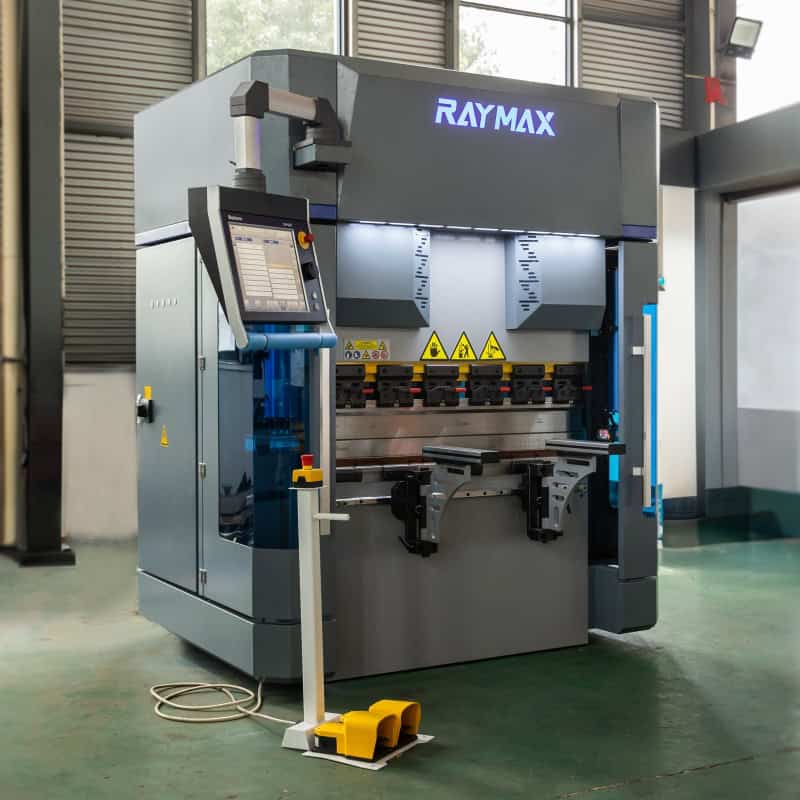
6. How to choose a suitable sheet metal press brake
6.1 Main considerations
The main considerations for selecting a sheet metal press brake are divided into four aspects, namely the type and thickness of the processing material, the bending length and tonnage, the production batch and automation requirements, and the budget and plant space.
6.1.1 Type and thickness of processing materials: Different types of materials have different properties and thicknesses, which will affect the performance of the press brake.
6.1.2 Bending length and tonnage: The bending length and tonnage will directly affect the size of the processable parts. We must choose according to actual needs.
6.1.3 Production batch and automation requirements: The use of automated manufacturing can reduce labor costs and is suitable for large-scale batch production.
6.1.4 Budget and plant space: When choosing a sheet metal press brake machine, we must fully consider the initial investment cost and the required space and purchase it reasonably.Galvanized steel: There is a layer of zinc coating on the surface of galvanized steel, which has strong corrosion resistance and can be used to make the hull.
6.2 Selection suggestions
When choosing a sheet metal press brake machine, we must choose the correct and appropriate model according to our actual needs and different requirements, purchase on demand, and use it reasonably. Choosing the right model can greatly improve production efficiency.
7. Common problems(FAQS)
8. Conclusion
With the continuous advancement of modern technology, sheet metal press brakes have gradually become indispensable working equipment in the manufacturing industry, playing a vital role in all walks of life. Its advantages of high efficiency, flexibility and versatility have greatly improved the efficiency of bending work.
Further Reading
Laser Cutting Machine application Explained: Top Materials, Applications & Safety Tips Unveiled
Press Brake Software: Basics, Implementation, Examples & Selection Guide
Press Brake Dies Explained: Types, Applications, and golden rule of selection
Hydraulic Press Brake Troubleshooting: The Ultimate Guide to Fix Common Problems
Press Brake Radius Mastery: Inside/Outside Radius, 8× Rule, and Real-World Tips
CNC Laser Cutting Machines Comparison:CO₂ vs. Fiber vs. Diode
What Is a 3 Axis Press Brake? Complete Guide to Structure, Benefits & Selection
Press Brake Buyers Guide: Expert Tips to Select, Compare, and Buy with Confidence
Proper setup steps for Press brakes and analysis of common calibration issues
What is a 6 Axis Press Brake? Working Principles, Advantages, Applications, and Buying Guide
The Ultimate Guide to Press Brake Safety Devices and Guidelines for 2025
10 Press Brake Bending Problems and How to Fix Them in Sheet Metal
Post Your Review
Share Your Thoughts And Feelings With Others
Hello, Customers!

Author introduction
My name is Francis Pan, and I am the foreign trade manager of RAYMAX. I have been engaged in the fields of metal manufacturing and CNC machinery for over 10 years. Welcome to visit our official website, I am more than happy to provide you with the best service and products.
Email: [email protected] | Wechat: 13645551070
Top Guidelines
- What is an 8 axis press brake: Why It’s the best investment for complex bends
- Press Brake Guarding Systems & Requirements: OSHA‑Compliant Injury Prevention Guide
- What Is a 3 Axis Press Brake? Complete Guide to Structure, Benefits & Selection
- What is a 4 Axis Press Brake? Configuration, Advantages and Uses analysis
- What is a 6 Axis Press Brake? Working Principles, Advantages, Applications, and Buying Guide
- What Is a Press Brake Used For? 16 Industry Applications and 8 Types of Bends
- Press Brake Sheet Follower: Smart Support for Long, Thick, Thin Sheets
- Fiber Laser Cutting Machine Process
- Press Brake Air Bending: Guide to Principles, Calculations & Best Practices
- What Materials Can a Fiber Laser Cut? A Practical Handbook of Metals, Non-Metals & Limitations
- What is a Fiber Laser Cutting Machine? The Ultimate Guide for 2025
- What is Laser Cutting Machine? The Ultimate Guide for 2025
- Top 10 Fiber Laser Cutting Machine Manufacturers of 2025
- Press Brake Buyers Guide: Expert Tips to Select, Compare, and Buy with Confidence
- Hydraulic Press Brake Troubleshooting: The Ultimate Guide to Fix Common Problems

